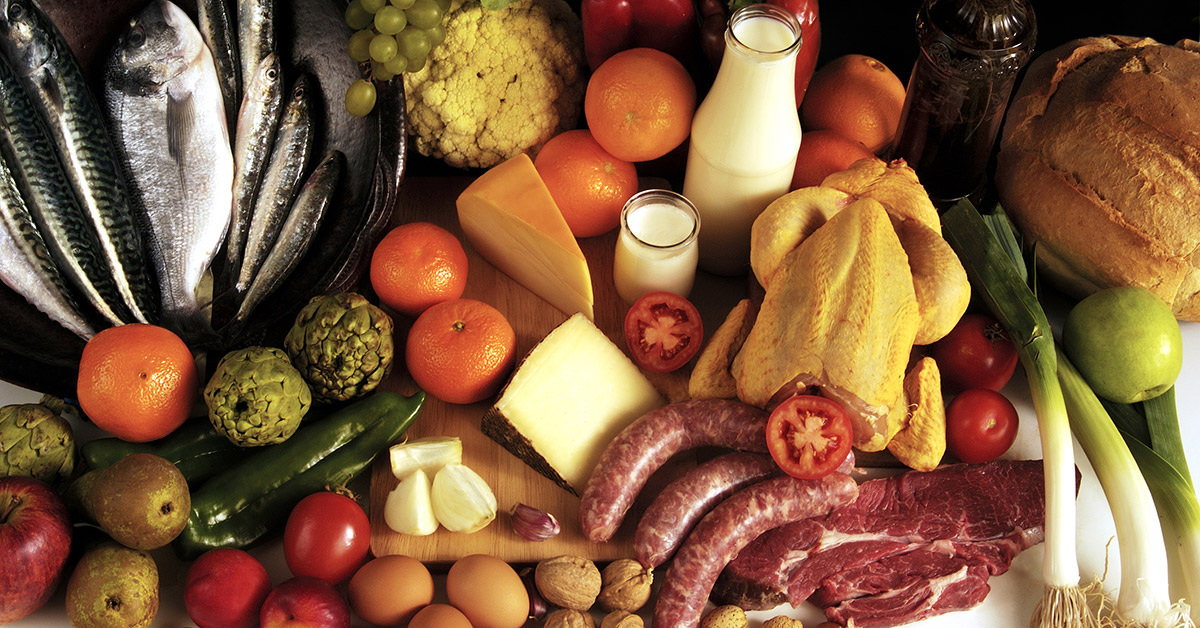
Every five years, the U.S. Department of Agriculture (USDA) and U.S. Department of Health & Human Services (HHS) develop the Dietary Guidelines for Americans that recommend what to eat and drink and how much for individuals — think the Food Pyramid and MyPlate. The guidelines also form the foundation for federal food programs, such as the National School Lunch Program and School Breakfast Program, and the Child and Adult Care Food Program. These guidelines can have an impact not only on your health, but also on the marketplace and affect, for example, what’s in your cereal, pizza crust, and sugar-sweetened iced tea.
To craft the upcoming 2020-25 guidelines — due out in December — the USDA and HHS will review the scientific report they commissioned from the 2020 Dietary Guidelines Advisory Committee, made up of 20 experts from across the U.S., as well as public comments on that report. The scientific report was made public on July 15.
The 2020 advisory committee dove deeply into data about diet and eating habits, using multiple approaches to examine the evidence, including analysis of federal datasets and food pattern modeling, and extensive systematic reviews of the literature. The members considered more than 12,000 public questions about such topics as the ideal amount of carbohydrate for dietary patterns that prevent chronic disease, the use of ketogenic and other high-protein diets for weight loss and disease prevention, and the role of intermittent fasting in weight management.
One of the committee experts is University of Minnesota School of Public Health Associate Professor Jamie Stang, who brings a career’s worth of research into nutrition and maternal and child health focusing on obesity during pregnancy. We asked Stang what’s different about the scientific report this time around, what’s controversial, and what the committee members learned that surprised them.
SPH: Let’s start with the controversial things.
JS: The first is sugar intake. Past guidelines recommended including 10% or less of daily calories from sugar in your diet. We’re recommending 6% or less. You can replace those calories with nutrient rich foods instead, which would help you meet requirements for other food groups. There are only three or four food sources that provide 70-80% of the sugars in our diet — the highest percentages come from desserts and sugar-sweetened drinks. To follow these recommendations would mean shifts in the food supply, particularly, beverage choices and ingredients in processed foods. I’m sure we’ll get lots of public comments about this.
SPH: How do you think the sugar recommendation might change the food industry?
JS: When the guidelines come out, they set the benchmarks for childcare meal patterns and school meals. School meals, in particular, are huge markets for food companies. They tend to develop products in response to the guidelines. If the guidelines adopt our sugar recommendation, I think companies will be pressured to make lower sugar versions of drinks. If they want to provide dessert products to schools, they’ll need to have less added sugar.
SPH: What’s the second controversial piece?
JS: I’m not sure this is a controversial recommendation, but I think it will surprise people. And that’s alcohol intake. The data we examined showed that even one drink a day for both genders is the limit of what you want to consume. And because some alcohol is consumed with mixers, they add sugars and additional calories. The committee has in the past looked at alcohol consumption, but this time it considered alcohol intake from a more holistic perspective — how it contributes to death from many causes (all-cause mortality) rather than from just a single cause, such as heart or liver disease. When you look at alcohol more broadly, you get a different picture.
SPH: How did red meat fare this time around?
JS: In the report, there’s a bigger emphasis on eating fish and seafood, particularly for pregnant women and kids. We lack omega-3 fatty acids in our diet and Americans, as a rule, don’t eat a lot of fish or seafood. There’s also a little more emphasis on non-animal sources of protein, so more pulses [dried peas, beans, and lentils], tofu, and fish. We’re not saying “no red meat,” but we’re saying limit red meat. One of the dietary patterns, which have been in place since 2010, that we recommend is the Healthy Mediterranean-Style Pattern, which includes meat a couple times a week, but with an emphasis on plant oils and proteins.
SPH: What are “patterns”?
JS: Patterns in this context are distinct but equally healthy ways to eat and people can adapt them to fit their tastes and/or cultural or religious preferences. You can pick one as a basis and work within it. The other two patterns are the Healthy U.S.-Style Pattern, which has more dairy than the Mediterranean pattern, and the Healthy Vegetarian Pattern, which replaces meat/poultry/fish with eggs, soy, nuts, legumes, etc. We didn’t include a vegan dietary pattern because there isn’t enough data yet for vegan adults to build one.
Parents do really well for a while, then their children’s eating habits start to slide around 20 months and kids become very much like adults. They don’t eat fruits and vegetables anymore, dairy intake starts to drop, and sugar and sodium intakes start to rise.
SPH: What were new areas of exploration for the committee?
JS: This is the first time that the report has included separate guidelines for what to consume during pregnancy and lactation. We looked not just at nutrients, but at how food and dietary habits relate to a large variety of outcomes, such as gestational weight gain, hypertension, gestational diabetes, and postpartum weight retention. Our exploration is not totally comprehensive because we can’t cover everything with a single committee, but it’s a really good start.
SPH: I know you also looked at younger children for the first time.
JS: Yes, previously the guidelines started at age two, and that had a lot to do with limited national data for children under 24 months. Now we have better data. We looked at that transition from milk-based feeding to solid foods and it’s really fascinating in regard to how parents feed their kids from 12 to 24 months. Parents do really well for a while, then their children’s eating habits start to slide around 20 months and kids become very much like adults. They don’t eat fruits and vegetables anymore, dairy intake starts to drop, and sugar and sodium intakes start to rise. I think this happens for a combination of reasons. Kids become more vocal at that age and they become picky eaters. And food for kids is marketed so heavily (such as foods in pouches) and it’s these foods that get them into high-sugar, high-sodium, low-fiber dietary habits. One of the things we really tried to promote in the report is that there needs to be a lot more attention paid to that transition from 12-24 months.
SPH: What else raised red flags for you when you were creating the report?
JS: We noted a few nutrients that were of public health concern. We saw that calcium is pretty low in kids. Starting at age four, their calcium intake really starts to drop off as they reduce dairy intake and it remains low through adulthood. Vitamin D is another concern. We get a little in our diet from egg yolks and irradiated mushrooms… we don’t actually see a lot of people out there eating irradiated mushrooms. We’re probably going to need supplements or supplemented foods for certain nutrients. For example, you can’t eat enough nuts and fats to get your ideal levels of vitamin E and still have room for all the other food you need. Choline is a relatively new nutrient of concern. You need it for brain development and heart health, and it’s important during pregnancy. Egg yolks are one of your best sources and you may see more eggs suggested for pregnancy and infancy as a way to increase choline.
SPH: Did you find groups of people who need particular help?
JS: We did. The group that needs the most help — and this is not a surprise for us here in Minnesota because we do so much work in this area — is adolescents, especially females. They’re low in dairy, low in fruits, low in vegetables, low in fiber and quite a few teen females are low in protein. They need a lot of attention.
SPH: What do you want to delve into for the 2025 scientific report?
JS: Next time around, we’d like to see more exploration around the context of how people eat. We can look at all the data, but translating it into messages like the dietary guidelines that we expect people and programs to use really requires understanding the context. For example, we don’t know why adolescent girls have so many nutrient deficits or why children’s healthy eating habits drop off significantly at 20 months. There’s very little time and effort put into surveys asking people what influences how they eat, or what foods they buy, or even where they get their food. We need to shift the nutrition conversation away from single nutrients or single foods toward how people live and how they have to adapt.

